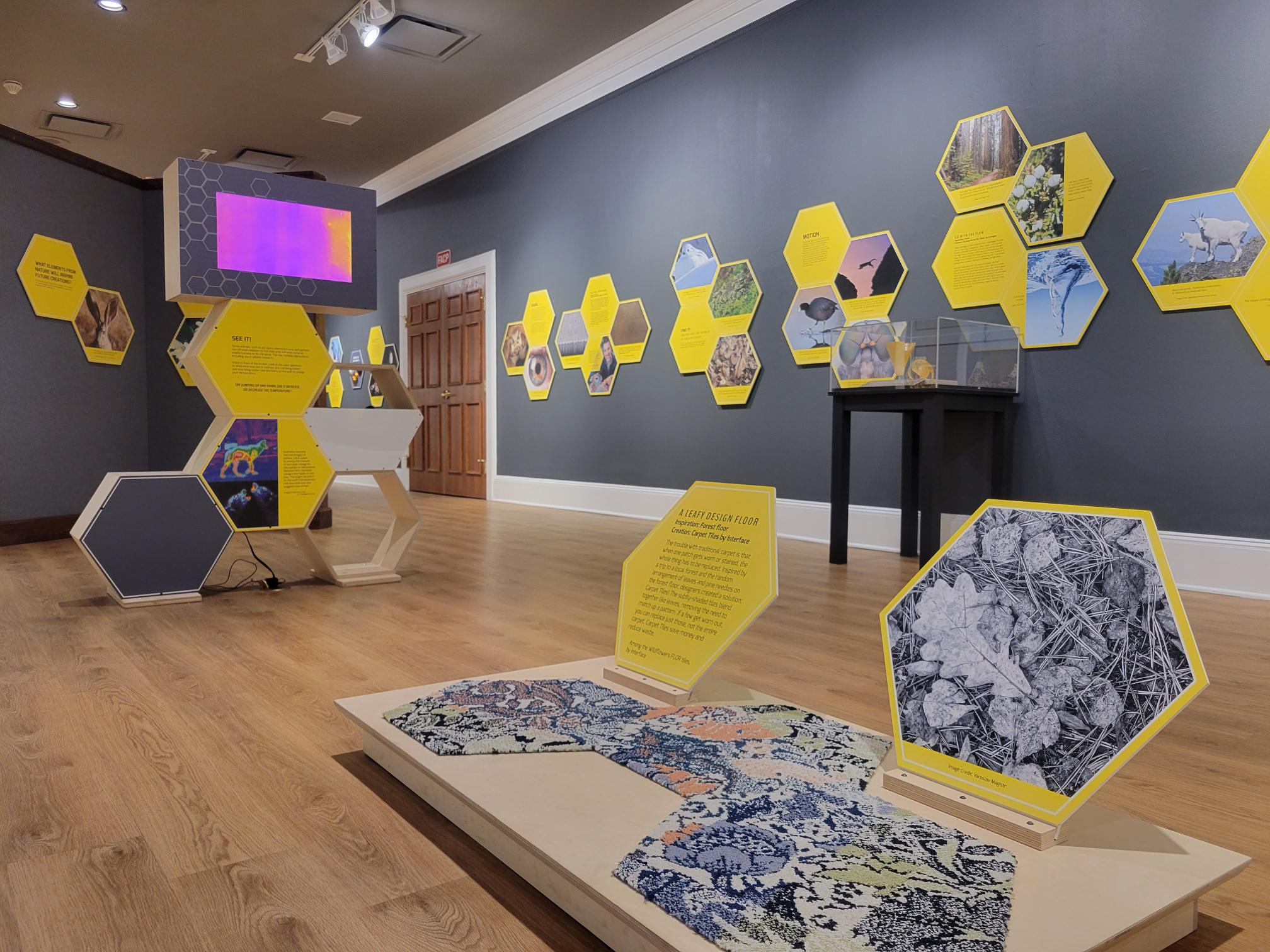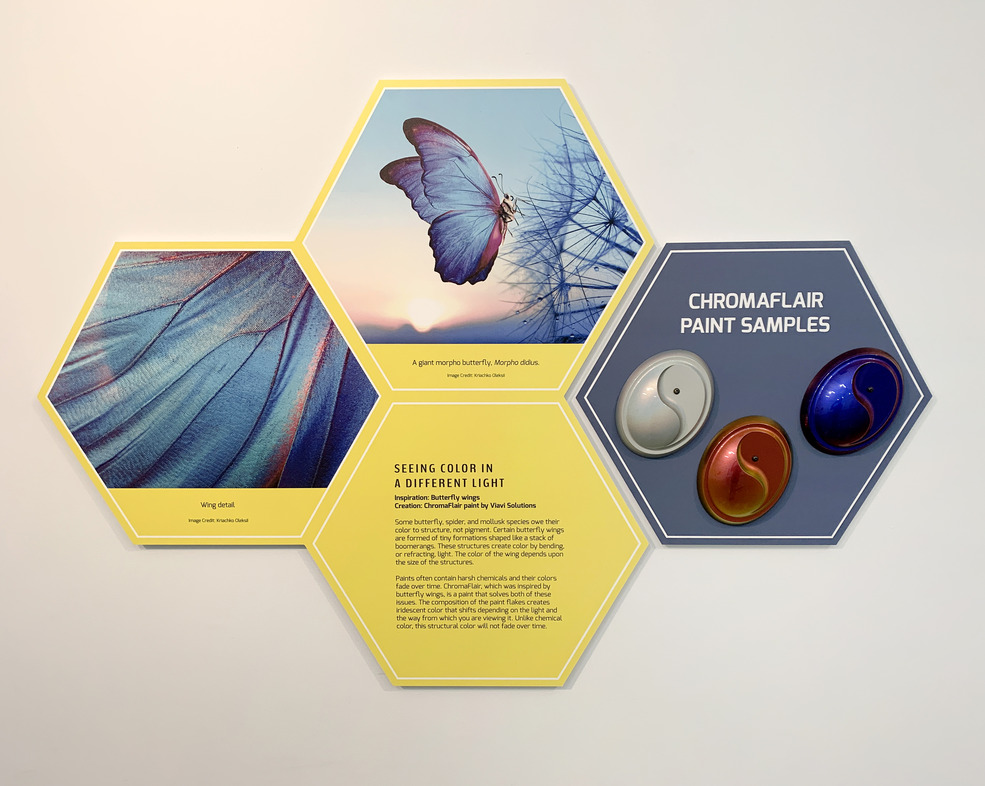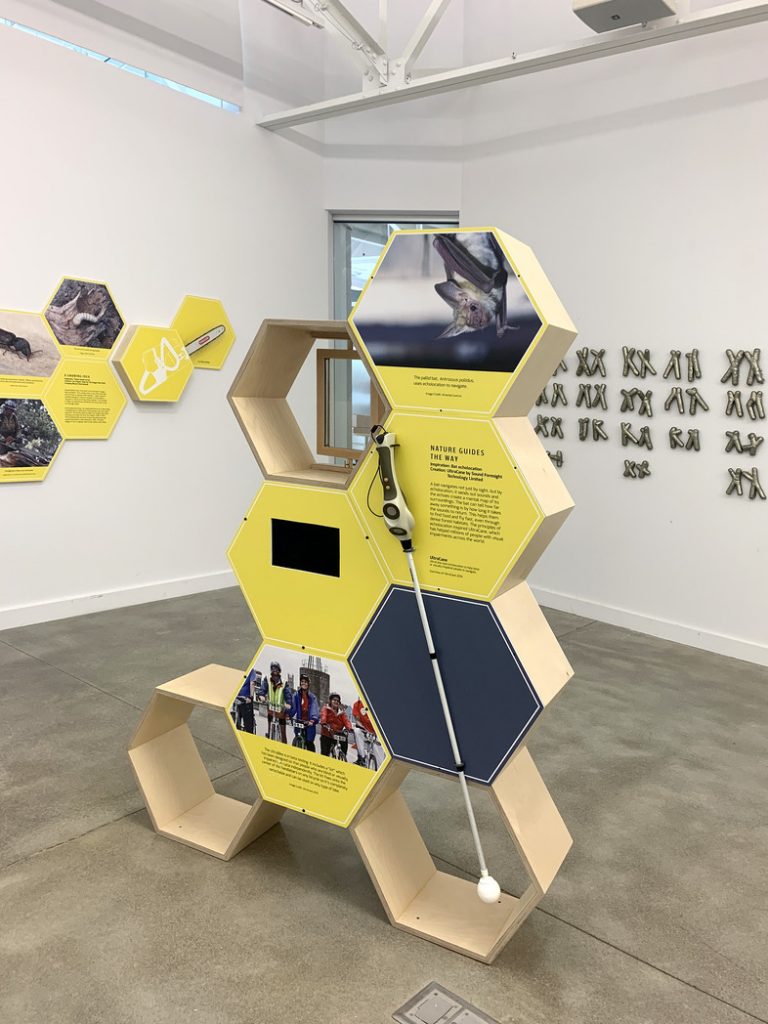
By Meghan E. Gattignolo
Just in time for Earth Day, the Customs House Museum & Cultural Center brings you a reminder of what nature can do for humans. Nature can feed us, shelter us and inspire us to build incredible things. Here are three key features of the new exhibit Nature’s Blueprints: Biomimicry in Art and Design you just have to experience yourself!
Thermal Selfies
See yourself like a boa constrictor would see you! Many types of snakes use infrared radiation to find their prey. Goldfish, salmon and bullfrogs also use their infrared abilities to navigate in murky water and to eat. So do mosquitos – they use infrared light to find the best place to bite you! For these animals, seeing temperature, rather than the colors we see, is more important for their survival.
For people, infrared imaging technology has many uses. Human beings can only see a small range of light. Visible light (the colors of the rainbow) defines the range our eyes can actually see. Our eyes work this way so we can spot danger quickly and from relatively far away; for example, spotting a brown bear in front of a green forest. Infrared light’s position on the spectrum is between radio waves and the color red, just out of our reach. By using cameras that can show us infrared, we can lengthen our light spectrum sight artificially. Infrared is used practically to find people and animals in the dark, discover illness or internal problems in the body and predict weather patterns. Don’t miss your chance to snap your own infrared selfie!

Inconceivable Iridescence
Speaking of color, have you ever noticed how the wings of a butterfly seem to shift colors if you see it from different angles? How does it do that? The iridescence of a butterfly’s wing is due to a specific structural detail that paint brands have sought to emulate. Find out more when you go see the exhibit and get a close-up look at this strange and beautiful engineering feat of nature!
Butterflies use their iridescence to confuse predators and blend into their environment. People use iridescent colors… because they’re pretty! Who doesn’t marvel at an undulating soap bubble on a sunny day? The paint product that is inspired by the natural structure of a butterfly’s wing, ChromaFlair, has a multitude of uses for car finishes, fabrics and plastics. Because of the way it’s made, the pigments are durable and likely won’t ever fade or chip, unlike other paints.

Bats Leading the Blind
When light and color are useless, we can still look to nature to help us see. Another section of this exhibit focuses on how people can harness the echolocation communication used by bats to innovate old technologies. The sight-impaired have used canes for hundreds of years to navigate new or dynamic environments. UltraCane, a recent technology, emits ultrasonic waves to alert the user when an object is near – or up to about four yards away. The cane vibrates to relay the information to the user. This is similar to how bats emit sound waves to sense how far away prey or objects are in the darkness of a cave. Learn more about how this works during your next trip to the Museum!
Nature’s Blueprints: Biomimicry in Art and Design is a traveling exhibit by ExhibitsUSA adapted from Innovation Lab: Design Inspired by Nature, curated by the High Desert Museum in Bend, Oregon. This exhibit features a variety of learning stations, artifacts and experiences that will surprise and inspire you. Catch it at the Customs House Museum & Cultural Center, now until May 25th.
References
Nature’s Blueprints: Biomimicry in Art and Design | EUSA
Animals With Good Night Vision (sciencing.com)
NASA – Infrared Light
ChromaFlair | VIAVI Solutions Inc.
About the UltraCane

Meghan E. Gattignolo is a freelance writer and longtime Clarksville, TN resident. She loves to obsess about historical subjects and annoy her family daily with unsolicited random facts. Meghan holds a History B.A. from Austin Peay State University and lives in town with her husband and two daughters.